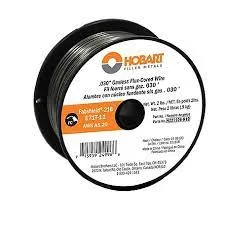Exploring the Advantages of Gasless Flux Core Welding Wire for Efficient Metal Fabrication
Exploring Gasless Flux Core Wire A Revolution in Welding Technology
Welding is an essential process in various industries, ranging from manufacturing and construction to automotive and aerospace. The advancement of welding technology continues to enhance productivity, efficiency, and safety. One of the latest innovations in this field is gasless flux core wire, an alternative to traditional welding methods that is gaining traction among professionals and DIY enthusiasts alike.
Gasless flux core wire, also known as self-shielded flux core wire, is designed to provide a high level of adaptability and usability without the need for external shielding gas. Unlike traditional MIG (Metal Inert Gas) welding, which requires a flow of gas to protect the molten weld pool from contamination, gasless flux core wire relies on the chemical composition of the wire itself to create a protective barrier around the weld. This unique feature makes it particularly advantageous for outdoor and windy conditions, where shielding gas can be dispersed, leaving welds susceptible to defects.
One of the standout qualities of gasless flux core wire is its ability to produce strong, robust welds in a variety of materials, including mild steel and stainless steel
. This versatility makes it a preferred choice for a wide range of applications, from heavy industrial work to light repairs. The wire is often used in structural applications, fabrication, and maintenance tasks, where strength and durability are paramount.gasless flux core wire

Another significant benefit of gasless flux core wire is its ease of use. Welders do not need to set up complex gas delivery systems, making it suitable for both beginners and experienced professionals. The simplicity of the setup allows for quicker transitions between tasks, which can greatly enhance productivity. Additionally, because gasless flux core welding is less sensitive to environmental factors, welders can work more efficiently without the constant need to monitor wind conditions or other external variables.
Despite its advantages, there are some considerations to keep in mind when using gasless flux core wire. For instance, the welding process can produce spatter, which may require additional cleanup compared to gas-shielded welding methods. Additionally, the welds can appear slightly rougher, necessitating post-weld finishing to achieve a more polished look. However, with practice and skill, many welders find that they can produce high-quality results even with these challenges.
When it comes to choosing the right type of gasless flux core wire, there are several options available. The wire can vary in diameter depending on the specific project requirements, and welders should choose a size that complements their welding machine and the materials they are working with. Common diameters range from 0.030 inches to 0.045 inches, with variations designed for different thicknesses and types of metals.
In conclusion, gasless flux core wire represents a significant innovation in the welding industry. Its ease of use, versatility, and effectiveness in challenging conditions make it a valuable tool for a variety of applications. As technology continues to evolve, gasless flux core wire is likely to become even more popular, providing welders with reliable and efficient solutions for their projects. Whether for professional use or personal projects, exploring gasless flux core wire could prove to be a transformative step in welding practice.
-
E316L Welding Rod: Premium 316L Stainless Steel WeldsNewsAug.11,2025
-
Premium SG2 Welding Wire | High-Quality MIG/MAG for SteelNewsAug.10,2025
-
E309 Welding Electrode: Premium Stainless Steel Stick RodsNewsAug.09,2025
-
Premium Solid MIG Wire for Strong, Reliable WeldsNewsAug.08,2025
-
E6010 Cellulose Electrode: Deep Penetration Steel Welding RodNewsAug.07,2025
-
Premium E316L Welding Rod for 316L Stainless SteelNewsAug.06,2025


